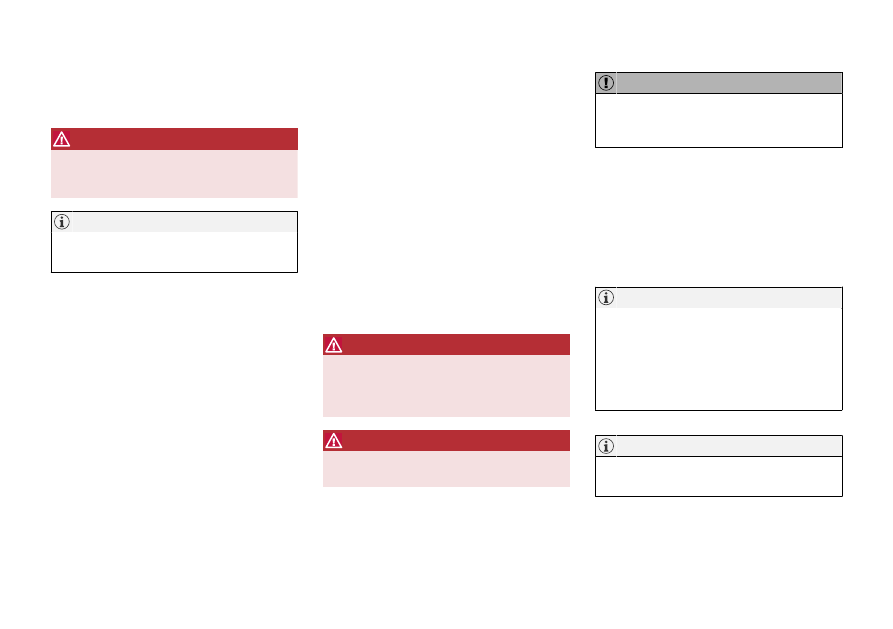Volvo V60 (2019 year). Manual - part 32

WHEELS AND TIRES
}}
553
The sealing compound bottle must be replaced
after use. Volvo recommends contacting an
authorized Volvo workshop for replacement.
WARNING
After using the tire sealing system, the vehicle
should not be driven farther than approxi-
mately 200 km (120 miles).
The compressor is an electric device. Follow
local regulations for disposal.
Related information
•
Recommended tire pressure (p. 535)
•
•
Inflate tires with the compressor included in
the tire sealing system (p. 553)
Inflate tires with the compressor
included in the tire sealing system
The vehicle's original tires can be inflated using
the compressor in the tire sealing system.
1. The compressor must be switched off. Make
sure that the switch is in the 0 (Off) position
and take out the electrical cable and the
hose.
2. Unscrew the tire's valve cap and screw the
hose's valve connector as far as possible
onto the valve.
Be sure the air release valve on the com-
pressor's hose is completely closed.
3. Connect the electrical cable to the nearest
12 V outlet and start the vehicle.
WARNING
Inhaling exhaust fumes could lead to serious
injury. Never leave the engine running in an
enclosed space or a space without sufficient
ventilation.
WARNING
Never leave children unattended in the vehicle
while the engine is running.
4. Start the compressor by moving the switch to
the I (On) position.
Risk of overheating. The compressor should
not be running for longer than 10 minutes at
a time.
5. Inflate the tire to the pressure specified on
the tire pressure decal on the driver's side
door pillar. If the inflation pressure is too
high, use the air release valve to release air.
6. Switch off the compressor. Remove the hose
and the electrical cable.
7. Screw the valve cap back onto the tire.
•
After inflating a tire, always replace the
valve cap to help prevent valve damage
caused by gravel, dirt, etc.
•
Use plastic valve caps only. Metal caps
could corrode and become difficult to
remove.
The compressor is an electric device. Follow
local regulations for disposal.